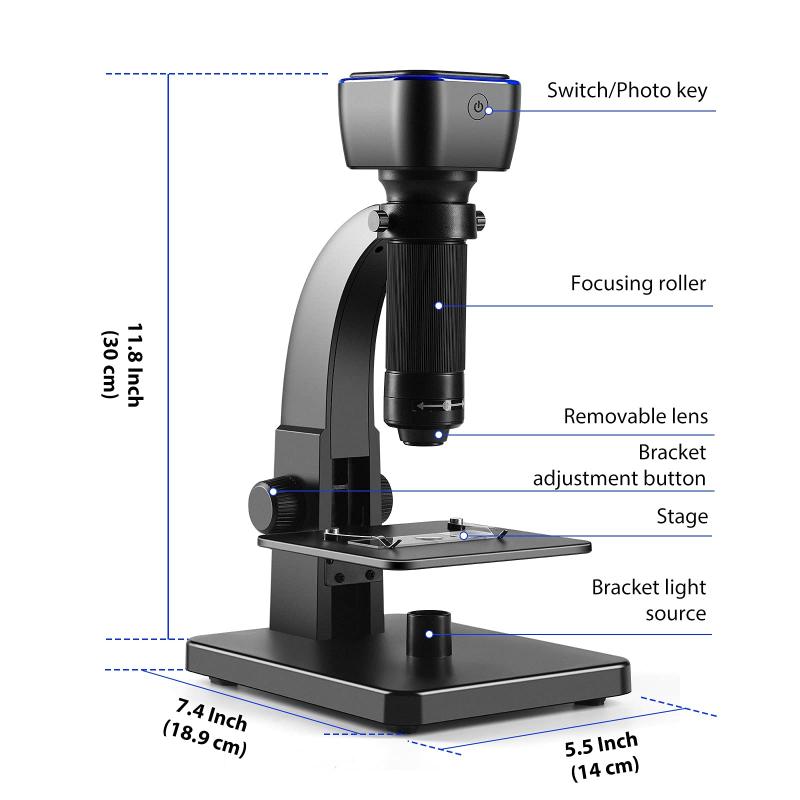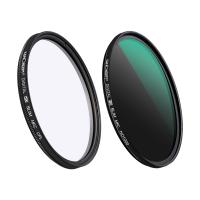Why Use Electron Microscope ?
Electron microscopes are used to study the structure and properties of materials at a very high resolution. They use a beam of electrons instead of light to create an image of the sample being studied. This allows for much higher magnification and resolution than is possible with a traditional light microscope. Electron microscopes are used in a wide range of fields, including materials science, biology, and nanotechnology. They are particularly useful for studying very small structures, such as viruses, bacteria, and individual atoms. They can also be used to study the properties of materials at the atomic level, which is important for developing new materials with specific properties. Overall, electron microscopes are an essential tool for researchers in many different fields who need to study materials and structures at a very high level of detail.
1、 Higher resolution imaging
Electron microscopes are used for higher resolution imaging because they use a beam of electrons instead of light to create an image. This allows for much higher magnification and resolution than is possible with a traditional light microscope. Electron microscopes can magnify objects up to 10 million times, allowing scientists to see details that are too small to be seen with a light microscope.
In addition to higher resolution imaging, electron microscopes are also useful for studying the structure and composition of materials at the atomic and molecular level. This is important in fields such as materials science, nanotechnology, and biology, where understanding the structure and properties of materials is critical to developing new technologies and treatments.
Recent advances in electron microscopy technology have also made it possible to study biological samples in greater detail than ever before. Cryo-electron microscopy, for example, allows scientists to study the structure of proteins and other biomolecules in their natural state, without the need for staining or other chemical treatments that can alter their structure.
Overall, the use of electron microscopes has revolutionized our understanding of the world around us, allowing us to see and study things that were once invisible to us. As technology continues to advance, it is likely that electron microscopy will continue to play a critical role in scientific research and discovery.

2、 Study of subcellular structures
Electron microscopes are used to study subcellular structures because they provide a much higher resolution than traditional light microscopes. This allows researchers to see smaller structures and details within cells, such as organelles, membranes, and even individual molecules. The high resolution of electron microscopes is due to the use of a beam of electrons instead of light, which has a much shorter wavelength.
In recent years, electron microscopy has become even more important in the study of subcellular structures due to advances in technology. Cryo-electron microscopy (cryo-EM) has revolutionized the field by allowing researchers to study biological samples in their native state, without the need for staining or fixation. This has led to the discovery of new structures and insights into cellular processes, such as the structure of the ribosome and the mechanism of action of ion channels.
Furthermore, electron microscopy has also been used in the study of viruses, including the recent COVID-19 pandemic. Cryo-EM has been instrumental in determining the structure of the SARS-CoV-2 virus, which has led to the development of vaccines and treatments.
In summary, electron microscopy is essential in the study of subcellular structures due to its high resolution and ability to reveal details that cannot be seen with traditional light microscopes. Advances in technology, such as cryo-EM, have further expanded the capabilities of electron microscopy and led to new discoveries in the field of biology.

3、 Analysis of nanomaterials
The use of electron microscopes is essential for the analysis of nanomaterials due to their high resolution and magnification capabilities. Nanomaterials are materials with dimensions in the range of 1-100 nanometers, which are too small to be observed with traditional optical microscopes. Electron microscopes use a beam of electrons instead of light to create an image, allowing for much higher magnification and resolution.
Electron microscopes can provide detailed information about the size, shape, and structure of nanomaterials, as well as their chemical composition and surface properties. This information is crucial for understanding the behavior and properties of nanomaterials, which are increasingly being used in a wide range of applications, from electronics and medicine to energy and environmental remediation.
In recent years, there has been a growing interest in the use of electron microscopy techniques for the analysis of biological samples, including cells and tissues. Advances in electron microscopy technology, such as cryo-electron microscopy, have enabled researchers to study biological structures at the nanoscale with unprecedented detail and clarity.
Overall, the use of electron microscopes is essential for the analysis of nanomaterials and has become an increasingly important tool in many fields of research. As technology continues to advance, it is likely that electron microscopy will continue to play a critical role in our understanding of the nanoscale world.

4、 Investigation of viruses and bacteria
Electron microscopes are used to investigate viruses and bacteria because they provide a much higher resolution than traditional light microscopes. This allows researchers to see the fine details of these microorganisms, such as their shape, size, and internal structure. Electron microscopes use a beam of electrons instead of light to create an image, which allows for much higher magnification and resolution.
In recent years, electron microscopy has become even more important in the study of viruses and bacteria due to the emergence of new and highly infectious diseases. For example, the COVID-19 pandemic has highlighted the need for rapid and accurate identification of viruses, which can be achieved through electron microscopy. Electron microscopy has also been used to study the structure of the SARS-CoV-2 virus, which has led to the development of new treatments and vaccines.
Furthermore, electron microscopy has been used to study the interactions between viruses and host cells, which can provide insights into the mechanisms of infection and potential targets for treatment. For example, electron microscopy has been used to study the structure of the HIV virus and its interactions with host cells, which has led to the development of new antiviral drugs.
In conclusion, electron microscopy is an essential tool for investigating viruses and bacteria, providing high-resolution images that allow researchers to study their structure and interactions with host cells. With the emergence of new and highly infectious diseases, electron microscopy has become even more important in the fight against infectious diseases.








































